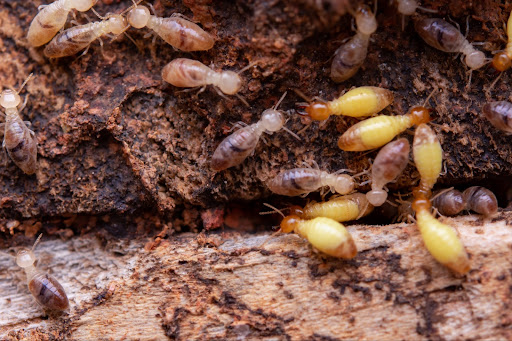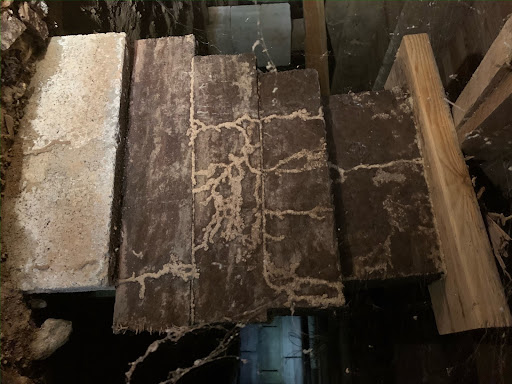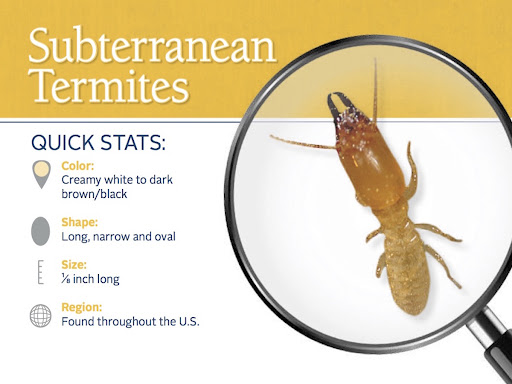
The Trouble With Termites
Like it or not, termite season is here. The weather is getting warmer, spring is here and it’s game on! Termites are prevalent in our area and are referred to in some circles as the “silent destroyers!” They have the ability to chew through wood, flooring and wallpaper without any immediate signs of damage. According to housemethod.com, termites cost homeowners more than $5 billion in property damage in America each year— costs that are typically not covered by homeowners’ insurance policies. In addition, termites and other similar pests cause over 40 billion in damages to crops, lumber and homes combined annually.
This is why it’s extremely important to know what types of termite species are active in our area, and to understand ways to prevent them from causing damage to your home and business. Number one on our termite target list is the Subterranean Termite.
Here are some things to know about these nasty creatures – and some helpful tips from the pros here at Hopper Termite & Pest.
The Scoop on Subterranean Termites
-Image courtesy of pestworld.org
This termite species is extremely common in southern states and hotter climates. Subterranean termites live in underground colonies with as many as two million members, and are also found in moist, secluded areas above ground. They build distinctive tunnels, often referred to as “mud tubes” to reach food sources and protect themselves from open air. Their hard, saw-toothed jaws work like shears and are able to bite off extremely small fragments of wood, one piece at a time. Over time, they can collapse a building from the inside out.

-Termite tunnel recently photographed by one of our Hopper Technicians
Signs of Subterranean Termites
- Tunneling in wood
- Tunnels evident in the ground
- Swarms of winged termites
- Mud tubes (shelter tubes) present
- Noises from inside the walls/floors
- Floors start to sag, other structural issues becoming present
Termite Prevention Tips
- Avoid building a house where wood is in contact with the ground.
The rule of thumb is to allow at least six inches between anything wood and the ground. This could be latticework, wood siding, windows, doors, etc. Another thing to note is that even the use of pressure-treated wood can still be vulnerable to termites. This happens when there are cracks, or exposed, cut ends of the lumber, which allow termites to invade. If you’re already in a house where it was built with wood to ground contact, Hopper can help in ways where DIY methods will never work - Trees, shrubs and irrigation systems installed correctly.
Be sure to not plant trees and shrubs too close to your house. Don’t let anything planted touch the building, as this forms a convenient bridge for termites. When installing irrigation systems, be sure the water doesn’t puddle too close to the house – because: - Moisture is your enemy
Allowing moisture to accumulate near the foundation is a disaster waiting to happen. Water of any kind is an attractant for termites. The use of gutters, downspouts and splash blocks will help divert moisture away from your home or business. When it comes to inside the house, fix those leaky faucets. Check your AC unit as well, making sure nothing is leaking, and that the attached drain pipe is solid and transfers moisture far away from the building. - Avoid using too much mulch in flower beds
You guessed it – the use of mulch in your flower beds can attract termites. If you must use wood mulch, use as little as possible, keeping it raked as far away from the foundation. Consider using a wood substitute, such as rubber mulch or rock. Also, make sure that you don’t stack firewood near or next to the house. This simply puts a “We’re Open” sign out for termites.

-Foundation damage due to termites photographed by one of our Hopper Technicians
The Termite Terminators: Hopper Termite & Pest
Preventing and getting rid of pests are two different things. If you think your home or business has been infested with termites and/or other pests, give Hopper Termite & Pest a call today to set up a FREE PEST EVALUATION. Our trained technicians can easily tell the difference in termite damage versus damage caused by ants and other insects. If you have no signs of termites, you’ll find our yearly termite prevention plan is extremely affordable and is perhaps the number one service we provide.
Whether you are in North Arkansas or Southern Missouri, we can create a plan of action to get rid of these bugs before major damage is caused. Termites are not a pest that can be effectively controlled with do it yourself measures. Contact the professionals at Hopper Termite & Pest and let the termite terminators turn the tables on your termite troubles today!

